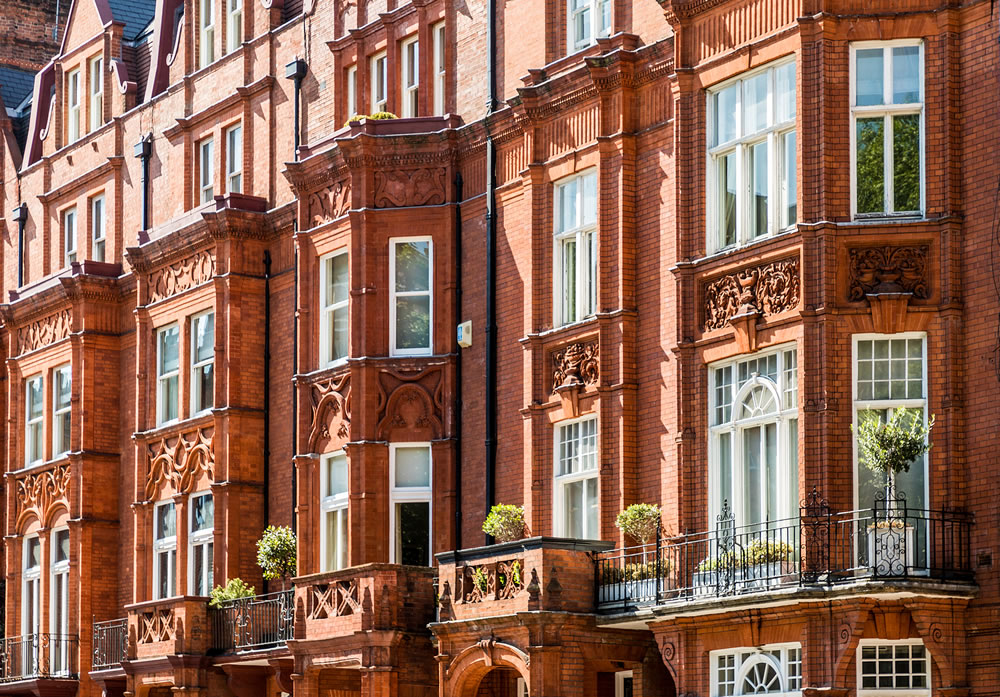Words by Alexander Sarafian, architect, project manager at London Central Portfolio (LCP)
London’s Victorian mansion blocks are the embodiment of style, and when passing through the city’s more affluent boroughs, their stylish architecture still can’t help but draw the attention of passers-by. Like a beautifully restored classic car, an antique Swiss watch, or a quality Scotch from an ancient distillery, these buildings have retained their historic charm over the years, and are the perfect example of designs that have successfully stood the test of time.
But their quality is not just skin deep; these buildings have a reputation for their generous room-sizes and window openings, tall ceilings and robust construction, adorned with interesting flourishes and details almost everywhere. As a result, properties within these blocks are always seen as the perfect projects for the trendiest interior designers, and worthy of show-stopping pieces sourced from the world’s most stylish furniture houses.

We have historical influences from the 19th century, such as the Gothic Revival and the Arts and Crafts movements, to thank for encouraging architects like Richard Shaw and Alfred Waterhouse to experiment with traditions, preventing these buildings from feeling outdated even today. They are deeply woven into the fabric of London’s history, and it would be sad to one day lose them.
But despite their brilliant design and engineering, like all buildings, they require maintenance from time to time. Unfortunately, many of the bureaucratic systems responsible for these ‘palaces for the many’ only manage issues according to their severity, when the problem has spread far beyond what’s visible. Just as nobody should only book an appointment with their dentist when their teeth hurt, and should instead opt for routine check-ups, whilst brushing and flossing regularly, historic buildings require this same philosophy when it comes to maintaining their charm and beauty. For many people, however, it’s hard to justify expenses when nothing seems wrong; especially amidst a cost-of-living crisis, and an unprecedented inflation of construction costs.

The good news is that if you own a property like this, it’s within your power to protect your investment. Bringing in the help of the relevant industry professionals to conduct regular appraisals and assessments will help you to identify hidden concerns – such as penetrating damp, condensation, poor ventilation, water leaks, structural defects and other common issues – early on, allowing you to deal with them before they spiral. In the beginning, these concerns are just small seeds, but unless they are addressed in a timely manner, they may slowly grow into the kind of monumental challenges that can ultimately defeat old buildings.
This advice might sound expensive, but having peace of mind is priceless and (given the option) absorbing these short-term costs versus dealing with problems that have grown into monsters is a far more appealing prospect for most. Not only is it better for your wallet, but also one step closer to safeguarding some Victorian grandeur, and some of the rich history that invariably goes with it.

London Central Portfolio (LCP) is a boutique real estate buying and investment agency representing international and UK based clients looking to purchase a home or buy to let investment in London.
With a team of in-house interior designers and architects, LCP specialises in refurbishing period properties. With over 30 years’ experience, LCP creates beautiful spaces – ranging from minor upgrades to full-scale renovations – for properties ranging from small apartments to magnificent town houses, with all projects managed to agreed timescales and budgets. LCP’s unique end-to-end refurbishment service is managed at every stage, from concept design to construction management.
For investors, LCP’s in-house lettings and property management team secures the best tenants and ensures smooth running tenancies.





















